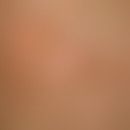Synonym(s)
Negative pressure wound therapy; NPWT; Vacuum assisted closure; Vacuum therapy
DefinitionThis section has been translated automatically.
Acronym for "vacuum assisted closure". VAC stands for a non-invasive moist wound treatment used for chronic therapy-resistant wounds and has been shown to have a positive influence on wound healing. In practice, the wound region is treated by means of negative pressure. As a result, wound secretion is continuously aspirated and absorbed. This continuous drainage cleans the wound and promotes granulation. In principle, moist wound treatment without accumulation of exudate is guaranteed. VAC is a closed system and is left on the wound for several days. This significantly reduces the number of dressing changes.
Note(s)This section has been translated automatically.
Due to the heterogeneity of the available studies, the very different indications for vacuum therapy and considerable qualitative and quantitative deficiencies of the studies, an interpretation of the results is only possible to a limited extent. From the data available to date from a total of 21 RCTs, the question of whether vacuum therapy of chronic wounds is superior to conventional wound treatment cannot be sufficiently clarified.
A larger randomised study recently published in the American medical journal (Costa ML et al. (2018)) on patients with open fractures of the legs could not demonstrate a positive effect of vacuum therapy.
LiteratureThis section has been translated automatically.
- Costa ML et al (2018) Effect of Negative Pressure Wound Therapy vs Standard Wound Management on12-Month
Disability Among Adults With Severe Open Fracture of the Lower Limb: TheWOLLF
Randomized Clinical Trial. JAMA 319:2280-2288. - Peinemann, F et al (2011) Negative-pressure wound therapy: systematic review of randomized controlled trials. German Arztebl Int 108:381-389



